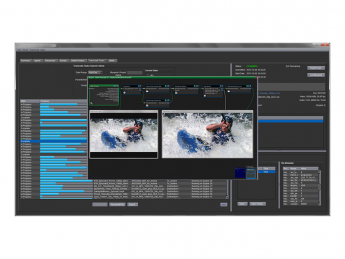Description
SelenioFlex™ File media processing solutions seamlessly blend transcoding and workflow capabilities, supporting a comprehensive range of formats with superior quality for applications from post production and archive to multiscreen distribution.
Featuring a microservices-based software engine that enables customizable foundational architectures, SelenioFlex File delivers a dynamic system management environment, allowing ready access to a catalog of features, functionalities and licenses that are required at run-time. This decision-based media processing workflow facilitates intelligent automation and exceptional scalability, and is easily managed from a single, intuitive and consistent interface.
As broadcasters and media companies look to streamline operations and maximize their resources and content assets across a variety of platforms, the distributed processing flexibility inherent in a SelenioFlex File solution is a definite advantage. Offering cloud-like reconfiguration capabilities within a system, or across geographically disparate facilities, SelenioFlex File allows resources to be grouped, scheduled and managed virtually for optimal efficiency and control. For the ultimate in future-proofing, an investment in SelenioFlex File file-based software solutions ensures adaptability to changing workflow requirements, license updates and technology advances.
For more detailed description and product specifications, see datasheet below
Benefits
- Reduce your watch folders: Automated decision-making detects source properties and metadata to adapt your workflow accordingly, minimizing the number of watch folders you need
- Repackage without recompressing: With microservices-based engines, you can repackage (rewrap or transmux) media between many container formats without recompressing the video or audio. Repackaging without re-encoding preserves quality and maximizes efficiency.
- Adapt continuously: Content and metadata are continuously analyzed on a frame-by-frame or sample-by-sample basis, enabling processing to automatically adjust to changing characteristics even within a single source file (such as mixed audio types, mixed AFD aspect ratio management codes and more)









































